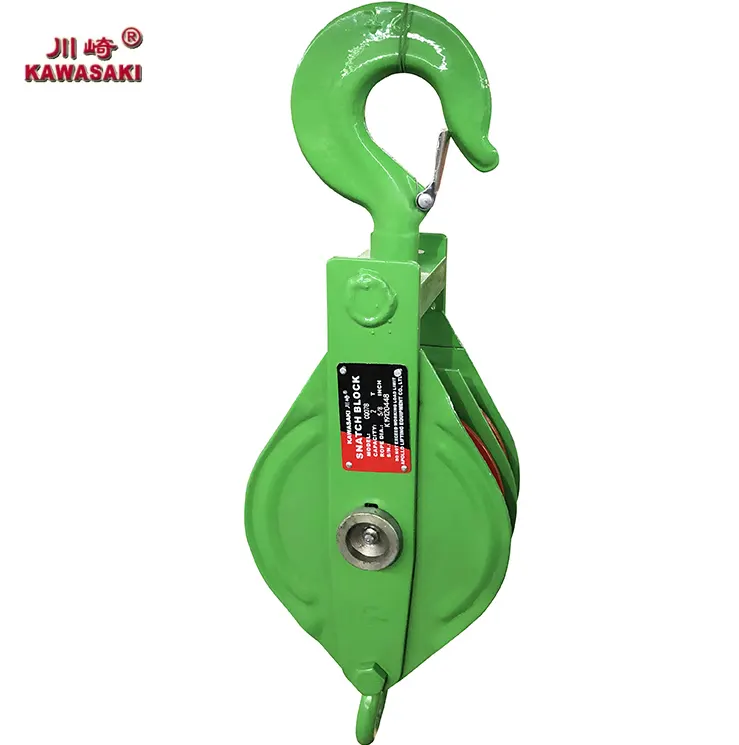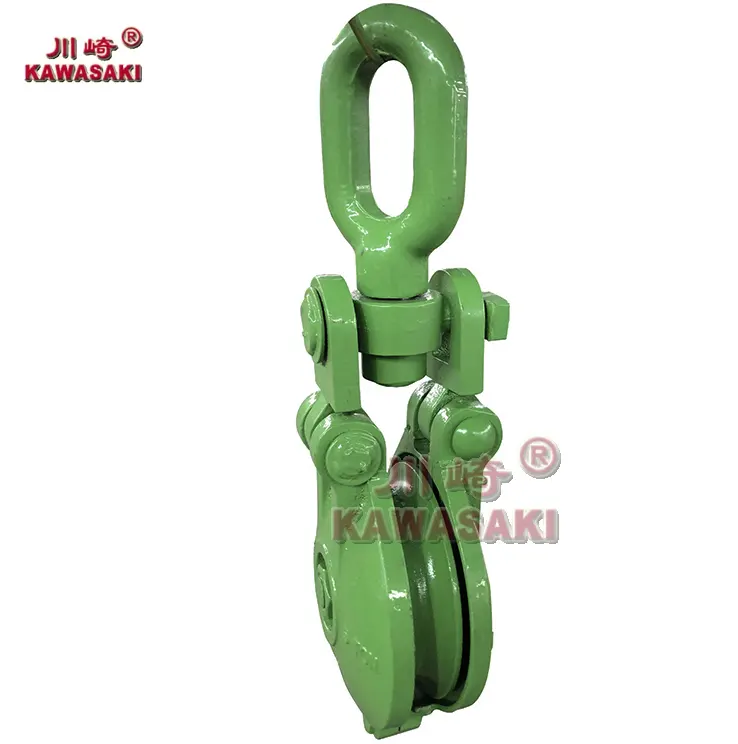Chain blocks play an important role in lifting jobs. They work in factories, building sites, and storage areas. These tools lift heavy things safely. They also make daily lifting tasks simpler. But like any machine, chain blocks stay dependable only with good care. Skipping basic upkeep often causes quick wear, poor results, or even preventable safety issues.
Apollo is a skilled hoisting machinery maker. The firm knows how key lasting power and upkeep are for factory users. The company’s KAWASAKI series of pulley blocks get made with ongoing performance in focus. They use tough materials, exact gears, and a design centered on safety. This guide covers frequent upkeep errors. It shows how to dodge them. And it explains how Apollo’s items make the task easier and more secure.

Why Is Regular Chain Block Maintenance So Important?
Without good upkeep, even the top-made pulley block can grow weak. Or it might break without warning. Steady care keeps work steady. It also cuts down on lost time at the site.
Extending Service Life and Ensuring Load Safety
A clean chain with oil moves well and safely. Good oil cuts down rubbing. It guards gears. And it stops rust. When chains get dry or dirty, wear happens fast. That’s when cracks or snaps might show up. A short clean-up after use can add many years to a chain block’s life.
Reducing Unexpected Downtime and Repair Costs
Sudden fixes cost a lot. Not just in cash, but in wasted hours too. Steady upkeep spots issues early. This happens before they grow into big problems. A tiny fix now always costs less than swapping out a whole hoist later.
Maintaining Lifting Efficiency Across Harsh Environments
From dockyards to plants, chain blocks deal with dust, warmth, dampness, and chemical contact. Steady checks ensure each moving piece stays in fine shape. This holds true even in rough spots. Apollo’s KAWASAKI pulley blocks use strong alloy steel. They also have lasting coats that hold up well in these places.
What Are the Most Common Chain Block Maintenance Mistakes?
Even skilled workers sometimes miss tiny details. These can lead to large issues down the line. Knowing these errors helps stop needless wear and harm.
Ignoring Load Chain Lubrication and Cleaning
Many users forget to clean and oil the chain after work. Dirt, metal bits, and old grease pile up over time. This leads to stiff spots and bumpy motion. Always wipe the chain clean. Check for rust. And put on light oil before putting it away.
Overloading Beyond Rated Capacity
Every chain block has a set load limit. Going over it doesn’t cut time. Instead, it stresses gears. It stretches the chain. And it risks full breakdown. Always look at the load tag before a lift. Apollo’s pulley blocks pass strict load checks. Each one gets designed with a 4:1 safety factor. This lets them handle heavy factory use without danger.
Skipping Routine Inspections and Brake Tests
The braking setup is the core of a chain block’s safety. Missing checks can hide issues like worn edges or oil drips. Monthly looks and load trials keep all in order. They also help workers feel sure on the job.
How Can You Identify Early Warning Signs of Chain Block Damage?
A chain block seldom fails without some hint first. Catching these signs soon can save tools and stop mishaps.
Unusual Noises and Irregular Chain Movement
Grinding sounds, clicks, or jerky moves often mean dirt or no oil. When motion isn’t even, it’s time to clean. Or swap out worn bits before they hurt the hoist frame.
Rust, Wear, and Deformation on Load Chains
Rust shows clearly that upkeep got skipped. Look hard for faded links, flat spots, or twists. Once a chain has these problems, you need a new one. Never try to fix a hurt chain link.
Reduced Lifting Performance or Slipping Brake Mechanism
If the hoist has trouble with loads it once lifted fine, stop right away. Or if the brake slides under weight, halt use. These signs point to inner wear. It needs a check by trained upkeep staff.
How Do Apollo’s Kawasaki Pulley Blocks Simplify Maintenance?
Apollo’s KAWASAKI pulley blocks get made not just for power but for simple care. Each type cuts down on upkeep times. Yet they keep top work in hard spots.
KAWASAKI Pulley Block CQ – Durable Design for Heavy-Duty Applications
The CQ model has a tough powder-coated finish. It uses strong alloy steel build. And it has a 4× safety factor. Its small shape and sealed bearings cut dust entry. This means less cleaning. And smoother runs over time. For plants or dockyards where lost time costs cash, this model gives lasting trust.
KAWASAKI Pulley Block Korean Type – Efficient Handling with Precision Manufacturing
This type mixes a light frame with a firm mechanical setup. Its even-running gears cut inner strain. Anti-rust treatment helps the block do well in outside or beach areas. Upkeep is easy. Users can fast clean and put back parts without special gear.

KAWASAKI Pulley Block WTS – Lightweight Yet Robust Solution for Versatile Use
Made with top-grade steel and heat-treated bits, the WTS pulley block gives high lift power with little wear. It fits well for steady field work. There, trust and easy grip matter. Its setup cuts the need for often swaps. This saves time and cash for upkeep groups.
Apollo’s quality system follows ISO9001 standards, with every unit tested for load capacity, stability, and safety. The result is equipment that stays dependable even after years of service.
What Safety Precautions Should Be Followed During Maintenance?
Safety means more than dodging mishaps. It’s about building a habit of caution. Right steps during upkeep keep the worker and tools safe.
Disconnecting Loads and Checking for Environmental Hazards
Always ensure the chain block has no load before upkeep. Clear the spot of blocks. Keep the work area dry and bright.
Using Certified Replacement Parts and Genuine Lubricants
Low-cost parts might seem alike. But they often break under strain. Always use maker-approved bits and oils. Apollo gives real add-ons and spare parts. This keeps each item’s strength whole.
Ensuring Operators Follow Manufacturer’s Maintenance Guidelines
Each chain block comes with upkeep tips. Following them isn’t just a rule. It keeps promises valid. And it stops wrong use that might cause mishaps. Apollo also gives teaching videos and tech help for upkeep teams around the world.
How Can Proper Maintenance Maximize Your Return on Investment?
A well-kept chain block doesn’t just run better. It lasts longer. And it saves cash over time.
Prolonging Equipment Lifespan and Reducing Replacement Costs
Care ahead keeps parts in form. This means fewer swaps and less lost time. The price of oil and clean tools is tiny next to getting a new block.
Improving Productivity and Operator Confidence
When tools run even, workers can focus on jobs. They don’t fret about breaks. Steady work also boosts lift accuracy. And it raises full job speed.
Supporting Compliance with Workplace Safety Standards
Many factory rules need steady tool checks. Keeping full upkeep notes helps firms stay in line. It dodges fines. With Apollo’s trusty lift tools, safety rules get simpler to hold.
Conclusion
Chain block upkeep might look basic. But it’s the small routines that count big. Steady cleaning, checks, and right use keep lift work safe and quick. Apollo’s KAWASAKI pulley blocks — including the CQ, Korean Type, and WTS models — mix strong stuff, clever setup, and proven lasting power. They cut upkeep time. And they boost ongoing work.
For firms that prize safety and steadiness, Apollo’s lift answers stand as solid helpers on the job.
FAQs
Q1: How often should a chain block be inspected?
A: For normal use, a simple check should happen monthly. A full look comes every three to six months. This depends on work amount and spot.
Q2: What’s the best way to clean a chain block after use?
A: Wipe it with a clean cloth to take off dust and grease. Then put a thin layer of light oil on the chain. Skip washing with water or strong cleaners that might start rust.
Q3: Can Apollo’s pulley blocks be customized for specific work conditions?
A: Yes. Apollo offers OEM and ODM customization including material, color, and special coatings such as anti-rust, explosion-proof, or corrosion-resistant designs suitable for different industrial needs.
